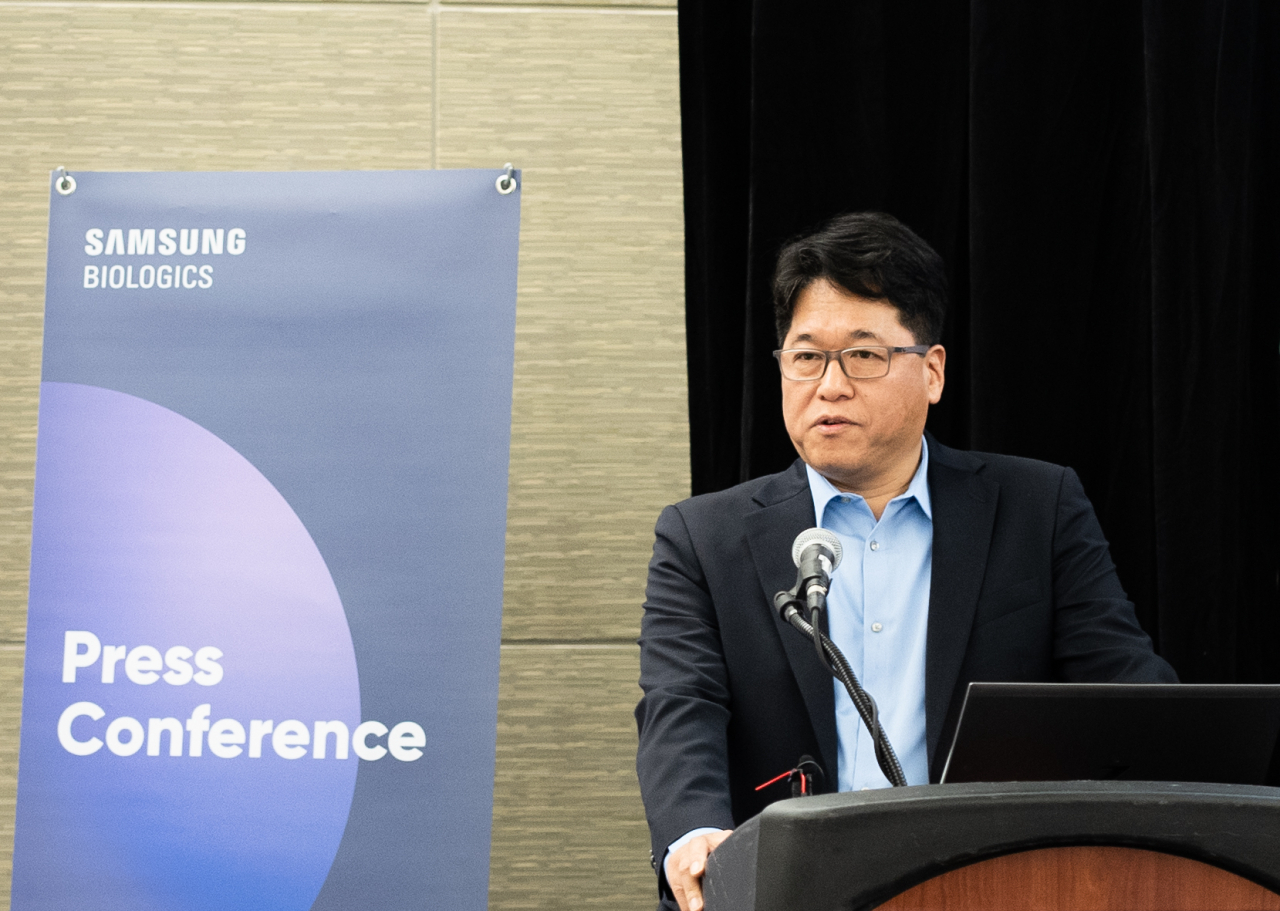[Bio USA] Who’s behind Samsung Biologics' evolving technology?
By Park Han-naPublished : June 8, 2023 - 16:27

By Park Han-na
Korea Herald correspondent
BOSTON – Providing speedy drug-producing service with the world’s largest production capacity has been the main driving force of the rapid growth Samsung Biologics has enjoyed over the past 10 years.
In the next 10 years, the company will focus on innovative technology in pursuit of becoming a global top-tier biopharmaceutical company, said Chung Nam-jin, executive vice president and head of the Bio R&D Center at Samsung Biologics.
Launched in 2022, the Bio R&D Center is spearheaded by Chung, who has over 28 years of experience in the biotechnology sector as a geneticist, a researcher at global pharmaceutical companies and an executive of biotech firms.
“The goal is to develop CDMO technology and expand to new modality within three years through the infrastructure built so far, and then leap forward to become a global top bio company in 10 years,” Chung told reporters during a press conference at the Boston Convention and Exhibition Center on Wednesday.
The center’s mission is strengthening Samsung Biologics’ CDMO -- contract development and manufacturing organization -- technology while attending to open innovation to expand its portfolio of services.
“Over the past 10 years, the company has been running its CMO business focused on monoclonal antibodies. It is our core business and our forte. But we need tech development beyond that as new technology and companies spring up everywhere,” he said, referring to its recent history of contract manufacturing.
Manufacturing antibody-drug conjugates is one of the areas that the company is trying to capitalize on from next year, harnessing a facility within its Plant 4.
“So far, we weren’t equipped with technology of ADC. So we had to send clients’ products to different CDMO firms for the linkage and conjugation components,” he said.
“It is our goal to produce finished ADC drug products in which we engage in developing ADC payloads and their attachment to the linker.”
This means Samsung Biologics will offer more comprehensive antibody-drug conjugate capabilities to their clients as the antibody, the linker and the payload are the three main components of ADCs.
ADCs are being developed by many biopharma businesses, including both big pharma and tiny biotech firms because they are highly efficient drugs that can be used as customized therapies for cancer treatment.
The R&D center also works on expansion of new modality including next-generation biopharmaceutical technology research, such as mRNA-based technology development and next-generation gene and cell therapy modality exploration.
Through open innovation, it plans to promote joint R&D, investment and technology transfer with promising biopharmaceutical companies.
“Since the launch of the R&D center, we applied for patent technologies related to bispecific antibodies and mRNA, and invested in Araris, which has ADC technology via the Samsung Life Science Fund,” he said. The fund was created jointly by Samsung Biologics and Samsung C&T.



















![[Today’s K-pop] Treasure to publish magazine for debut anniversary](http://res.heraldm.com/phpwas/restmb_idxmake.php?idx=642&simg=/content/image/2024/07/26/20240726050551_0.jpg&u=)